Iraq, home of the earliest civilisation namely the Sumerian civilisation in the fertile Tigris-Euphrates river valley, is the birthplace of writing and wheel. Modern Iraq corresponds to the Mesopotamia (Land between the rivers) of the Old Testament. Iraq with its legendary Babylon has been on top of my must-see list. My friends thought I was crazy to join an 11-day tour to Iraq. I had an unusual holiday visiting Baghdad, Babylon, holy shrines for Shia Muslims at Karbala and Najaf, fabulous archaeological sites at Uruk, Ur and Lagash and a nature wonderland, the Marshes.
Day 6: Najaf –Uruk– Nasiriya (about 200km; driving 5 hrs)
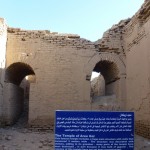 The road to Uruk is well-paved and the scenery looks less barren with sand dunes, canals, fields under cultivation and palm trees. As usual, we passed numerous check points. At one of the check points, the head officer who speaks English kindly allowed us to use the toilet. His colleagues are so friendly that we took plenty of photos with them.
The road to Uruk is well-paved and the scenery looks less barren with sand dunes, canals, fields under cultivation and palm trees. As usual, we passed numerous check points. At one of the check points, the head officer who speaks English kindly allowed us to use the toilet. His colleagues are so friendly that we took plenty of photos with them.
Uruk, an ancient city of Sumer dated from 4000BC, was continuously inhabited from 4000BC to the 5th century. It played a leading role in the early urbanization of Sumer. At its height c2900 BC, Uruk had probably 50-80,000 residents living in a walled area of 6 square kilometres. In the bible, Uruk was referred to as Erech.
The semi-mystical king Gilgamesh ruled Uruk in the 27th century BC and started building its walls. The city-state prospered under the aegis of its goddess Inanna / Ishtar –the goddess of love and war. It was abandoned before the Islam conquest of Mesopotamia. The site was rediscovered in mid 1850s.
I find the ruins most impressive and atmospheric. Escorted by armed police, we explored the ruins for three hours. Standing on the ziggurat of Inanna which rises to a height of 16m, I had a fabulous view of the 6000-year old ruins. We saw the world’s first words on clay, the floor of a temple with Babylonian inscriptions on the floor, remains of several temples including some clay cones used for ornamentation and walls with blue-glazed bricks. The mud-bricks used in the Anu ziggurat some 5000 years ago are still visible. The Temple of the Underworld with several rectangular walls looks spectacular from above.
We had a fantastic time at Uruk and did not have our lunch till 5:30pm in Nasiriya! A very good day!
Day 7: Nasiriya – Ur – Nasiriya (30km; driving 1 hr)
We spent four nights in Nasiriya using it as a base to visit the nearby attractions. The city, founded in 1872, is 370km southeast of Baghdad on the Euphrates.
Ur, close to Naisriya, was one of the leading old religious Sumerian cities of Mesopotamia. Its earliest dwellings go back 6000 years. The city’s patron deity was Nanna, the Sumerian moon god. Ur owes its fame primarily to the biblical tradition which claims it as the birthplace of the patriarch Abraham. It was at its height around the third dynasty (2124-2015BC) with a population said to be between 250000 to half a million inhabitants. The city was abandoned around the time of Alexander the Great i.e.4th century BC.
We had a good English-speaking guide and spent some two hours exploring the ruins. I had panoramic views of the ruins from the top of the ziggurat which measures over 60m long and 40m wide at the base. The ziggurat with three levels was once 26m high and the ruin today stands at about 16m. It was first constructed by Ur-Nammu, the founder of the third dynasty and restored in the 6th century BC by Nebuchadnezzar II.
Some of the most important discoveries from this site come from the royal cemetery which goes back 4500 years ago containing some 2000 graves. Many of the precious objects are now on display in various museums overseas. Those kept in the Museum in Baghdad have mostly been looted in 2003. What a pity! There is also a huge pit which was used to store and treat human waste! How clever the Sumerian and Babylonian were!
As it was the seventh day when Abbas were killed, all the shops were closed. Around 3:30pm, we visited the city centre on foot with the escort of a dozen of policemen. We ran into a TV film crew and the reporter interviewed Peter, our leader, about our tour and his impressions of Iraq. The Iraqis are keen to receive tourists and want the outside world to understand Iraq today. This news was aired on the Iraqi TV1 the following next day!
Day 8: The Tigris and the Marshes (90km; driving 2hrs)
Legend claims this place to be the Earthly paradise. The Marshes with a total area of about 10,000 square kilometres, is a unique region (one of the world’s largest ecosystems) where nature has preserved its virgin aspect. It is home of Marsh Arabs (the Madan), endless birds, fish, plants, reeds and bulrushes and one of the strangest aquatic environments where man lives alongside animals, birds and fish.
Each “island” is in fact a man-made mixture of earth and papyrus pressed hard. The watery “streets” are plied by boats of different kinds and sizes. The main mode of transport through the reedy waterways is a long and slim canoe known as a Mashuf. The lifestyle here built essentially around fishing, buffalo breeding and reed weaving, has continued for about 6,000 years as witnessed by the Sumerian bas-reliefs.
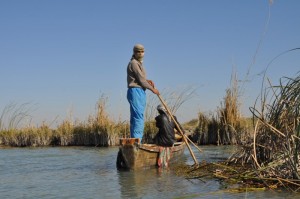 |
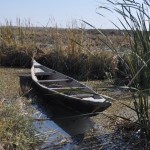 |
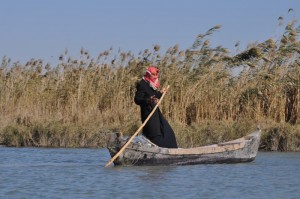 |
We visited four families. They all live in very simple cathedral-like huts built with dried reeds and mud and keep their cows outside. I went into two huts which basically have nothing except mattresses on the ground. The sanitary situation is far from satisfactory. We were met by many children who posed for photos. Most of them are photogenic: they have fair skin and features of Europeans! I was told they are poor and the children have no education. I am concerned about the future of these children.
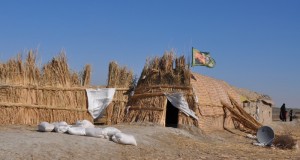 |
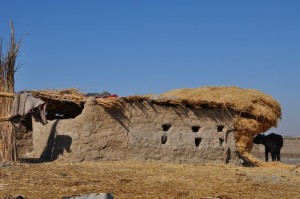 |
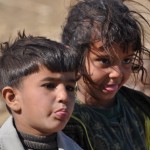 |
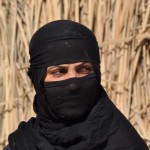 |
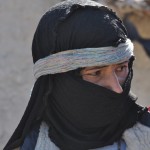 |
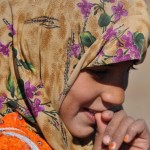 |
After lunch, we took photos of the other major river, the Euphrates. A local Iraqi invited us to his house for tea. We gladly accepted his invitation and had lots of fun taking pictures of his family while people from his village flooded in to take pictures of each of us with their mobile-phone!
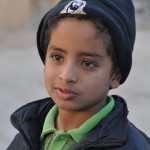 |
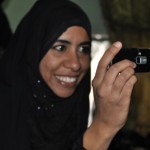 |
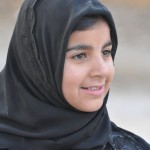 |
Day 9: Nasiriya – Tello (formely known as Ngirsu) – Lagash – Ash Shatra – Nasiriya (100km; driving 4 hrs)
The Sumerian kings of the country of Lagash once ruled over a territory of some 300 square kilometres comprising three major cities on the banks of an important channel fed by the waters of the Euphrates namely Ngirsu to the Northwest, city of Lagash in the centre and Nigin to the south.
On our way back, we stopped at Ash Shatra for a late lunch at 3:30pm. This small town was filled with people watching parades. Our police escort got very anxious and tried to stop us from mingling with the crowd. I could understand their anxiety as there had already been several bombing incidents in Iraq. Apart from the usual drumming and beating, there were a few interesting floats with someone dressed up as Abbas (with two red feathers) and as Imam Hussein in green followed by children and women. There was also the head of Imam Hussein in blood!
We had an archaeologist, Ameer-Alzubede as our guide. Our first stop was Ngirus, former capital of the State of Lagash. The major interest is the important archives and the objects discovered on the site including 2000 tablets from the archives of the domain of the goddess Ba’U and the Stele of the Vultures evoking the conflict between the States of Lagash and Umma. He also took us to see a depression where the French first discovered some 30 statutes in 1872. We saw the remains of some brick walls which are not fenced off. He explained that these structures might be from a market, a temple or a dam.March to LagashOur next stop was Lagash. As some sections of the path next to a water channel are narrow, we had to abandon our coach and cramped into two Toyota vans. I could hardly walk after the 9-km drive! Nonetheless, it is an experience and adventure!We were greeted by the leader of the tribe owning the land at Lagash. He looks majestic and handsome! Ameer took us to a site where a temple dedicated to Inanna/Ishatar once stood. Archaeologists from the University of Pennsylvania discovered over 10000 items from the site. Some of the discoveries are now in the US. To prevent looting, the site has been covered with mud.A family inviting us for tea
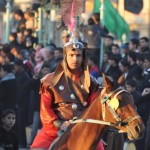 |
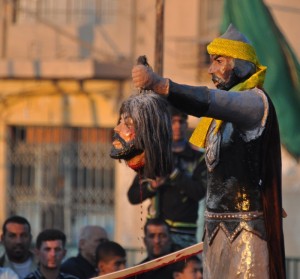 |
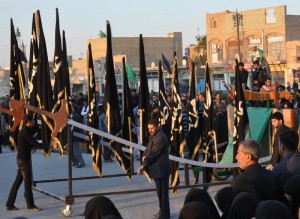 |
It was almost 6pm when we reached Nasiriya. Though I did not see much at Tello and Lagash, the parades and the atmosphere at Ash Shatra were most lively and remarkable.
Day 10: Nasiriya – Basra (150km; driving 3hrs)
We left with police escort from the province of Nasiriya. At the border, the police force from Basra took over. We then heard about the catastrophic bombing incident in Kabul which killed some 50 people! The murderer(s) are insane: they have no right to kill or injure innocent worshippers in the mosque.
Basra, founded in AD 636 as an encampment and garrison for an army of Arab tribesmen, is now the third largest city with a population of over 2 million. It has a network of canals and has the name of “The Venice of the Middle East”. Many oil fields are located in this area and Basra is only 330km from Baghdad and 30 km from the Persian Gulf (the Arabian countries call it the Arabian Gulf).
As it was the Day of Ashura and an official holiday, the city was quiet. We stayed in a so-called 5-star hotel which has very tight security. But there were only a few staff on duty and we did not even have much to eat for lunch.
After lunch, we were taken on a short walk along the Arabian River with the police escort. The river is just a few kilometres from the Iran-Iraq border. We had a sunset cruise and I saw abandoned villas, sunken or rotten ships and policemen/soldiers at watch-towers along the river.
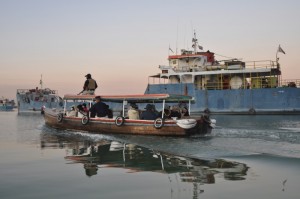 |
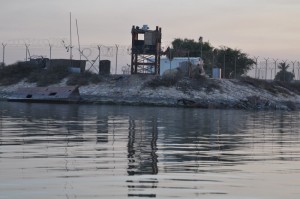 |
In the hotel we met Mr. Tam who comes from Hong Kong and works in Abu Dabi. He knows the region well and I learn a lot from him about recent developments in the Middle East. He said the Iraqis like Chinese and two Chinese oil companies are now working on a few oil fields in Iraq. His company is looking for business opportunities in Iraq.
Day 11(Wednesday, December 7): Basra (End of the tour)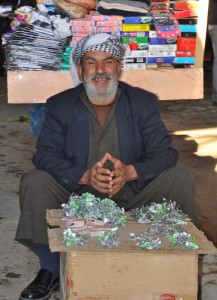
In the morning, we visited a bazaar which has been the highlight of our stay in Basra. Eight policemen with rifles in their arms walked in front or at the back of the group. Frankly, the market is not special but at least we mingled with the locals and bought walking boots, caps, badges and scarves. I also had two glasses of fresh juice. Mr. Tam got us 1.5kg of dates for only 20000 dinars and arranged us to visit a modern mosque which can hold 4500 worshippers. The mosque served 12000 free meals on the day of Ashura!
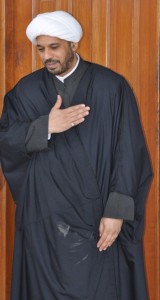 We had lunch in a restaurant on the river. We were told the fish from the Arabian River is special and nice. It turned out that the fish is actually ‘shrimp’ which is not fresh!
We had lunch in a restaurant on the river. We were told the fish from the Arabian River is special and nice. It turned out that the fish is actually ‘shrimp’ which is not fresh!
The group departed for Dubai after lunch. Though my flight on Turkish Airlines would be departing till 8:50am the following day, I decided to go to airport with the group to make sure I could leave without problems. It would also save me a lot of money (US$160 for the hotel and another $50 for a taxi) and I did not need to get up at 4am!
When I arrived at the airport at 2:45pm, I discovered there was an Iraqi Airway flight to Istanbul leaving at 6:30pm. But I could not change my ticket and had to pay US$373 for a one-way ticket. I had no option but to wait for the flight my agent in Hong Kong had booked for me. They should have found out about this Iraqi flight thus saving me lots of trouble!
I spent 17 hours at the airport and slept on the sofa. Another forgettable experience! The Iraqis are very nice and friendly. The security manager even gave me a blanket and could arrange me to sleep in a room reserved for ladies. The toilet is clean. I appreciate their kindness and preferred to sleep in the lounge. Surprisingly, İ felt most safe and there was no power cut for a change!
Time passed quickly as I was doing my travel notes till 9pm and then slipped into in my clean and comfortable sleeping bag. I managed to sleep till 5:30am the following day when departing passengers started to arrive. I was the first passenger to check in and everyone at the airport knew about my stranded stay in the airport!
Remarks
I have finally set foot in the war-infested Iraq thanks for the efforts made by Peter Cheng (the group leader) and Stephen Wong who flew to Beijing twice to get our visas for this visit.
It is an eye-opening trip though not a joyful one. There is too much devastation, raw scars and remnants of wars. People are also not supposed to laugh and enjoy themselves during the Ashura festival. With the police escort, we had a safe trip in Iraq but I have not seen the real Iraq.
I left Iraq with sadness and mixed feelings. First, Iraq has so much natural resource and could have been rich and well developed with an educated population. But with Saddam’s dictatorship, endless wars and unrest since 1980 and the UN embargo in 1990s, the country has been ruined and devastated. Iraq is in a dire need of proper infrastructures. As it has oil and gas which generate money, I hope it can redevelop fast thus raising the quality of life of the people who have suffered so much.
Second, security is still a major problem. There is no sense of normality when there are barriers to protect buildings/important areas, endless check points and road blocks. Armed policemen and soldiers are present everywhere. How to deal with extremists and terrorists remains a most challenging task for the Iraqi government. I hope the situations are under control after the departure of US troops at the end of this year. Time will tell.
Third, I find Uruk most impressive and inspiring. This trip has deepened my understanding on the Mesopotamian civilization which I have learnt so much since my trips to Syria, Jordan and Iran in the past two years. But I am sad to see my dream Babylon being spoilt by inappropriate restoration/renovation by Saddaö. The house of Abraham in Ur suffers the same problem. I was told there are some 20000 archaeological sites in Iraq. In order to take urgent action to protect their national treasures above ground as well as those still lying in the ground, Iraqis must move fast and get outside help from UNESCO and experts with a view to developing appropriate strategies, setting the right priority and implementing practical action plans.
Fourth, I am surprised that the archaeological sites at Uruk, Ur and Lagash which contain the earliest known Sumerian civilisation are not on the World Heritage Sites list.
Fifth, the Marsh Arabs seem to have an uncertain future. They are poor and uneducated. With lot of developments in the region, the natural habitat is under threat thus their lifestyle. What does the future hold for these people especially the children in modern Iraq?
I left Iraq with deep respect for the long-suffering Iraqis and for their ancient civilisation. I hope to return one day to see Iraq especially Northern Iraq on my own without the protection of armed policemen!


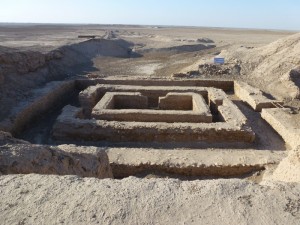
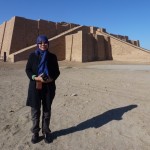
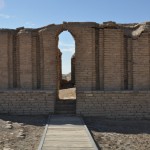
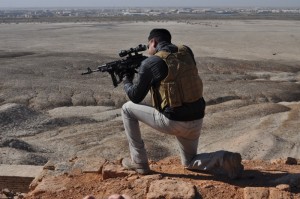

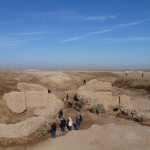
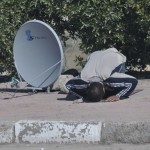
Dear Sarah,
Email a group photo to you 10 mins ago.
I view Iraq part one & part two at the same time, the caption is clear and detail, very informative and easy to read.
Anything I can help please don’t hesitate to call me.
Will reserve a seat to Afghanistan for you, stay behind no problem!
Have a nice trip!
Peter